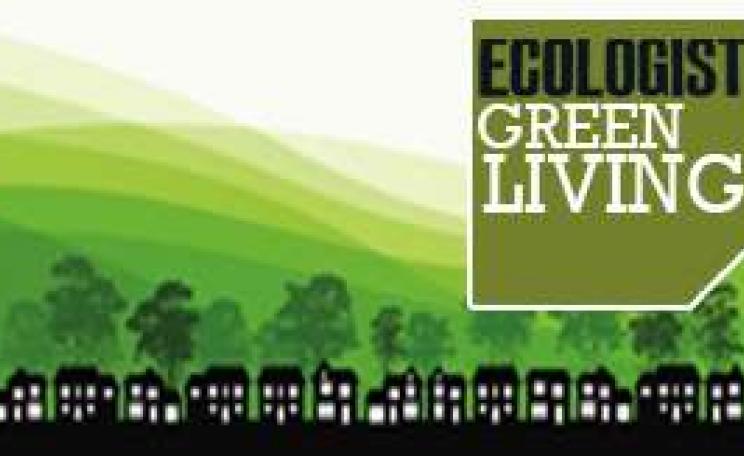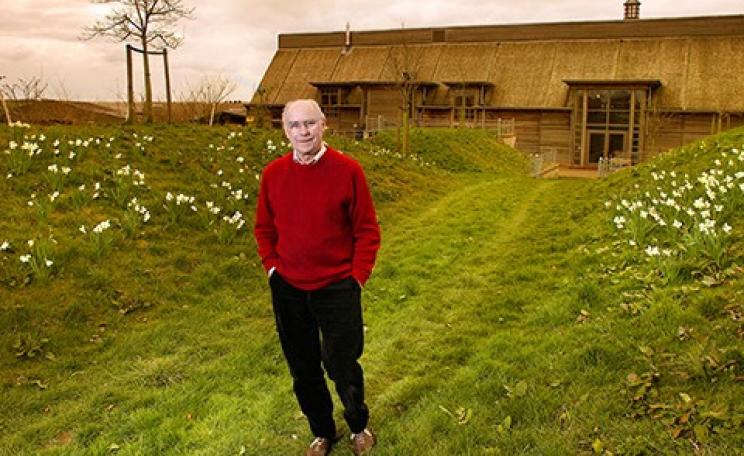Sven Segal is on a mission to make the perfect shoe: super-comfortable, practical and as pure, natural and non-toxic as a shoe can be.
As a former freelance shoe designer,he has worked for many big brands and designed every kind of shoe, from stilettos to industrial boots for fi re brigades and a lot of toxic trainers in between. He frequently visited shoe factories in China, where the biggest shock was the strong smell of glue. ‘In many cases it is solvent-based,’ he says, ‘which is highly toxic, particularly for the factory workers who inhale the stuff all day long.’
He also witnessed the workers’ long hours getting paid ‘peanuts’. ‘You could see it on people’s faces – the agony. It was not pleasant,’ he recalls.
Attempts to persuade big brands to change their ways – to use, for instance , vegetable-tanned leather - were met with a dead end.
'Price implications put them off. The mainstream shoe business is all about sourcing the cheapest materials, regardless of their dirty footprint. They want the process fast and cheap,’ says Sven. ‘I had to do my own thing.’
The result, launched in 2006, is Po Zu. Po-zu means ‘pause’ in Japanese – pause and refl ect. ‘This hectic lifestyle, this mad race to nowhere. Our feet bear all our weight and our planet bears all our waste,’ Sven says.
The shoes tick many of the eco boxes you’d expect: the uppers are made from vegetable-tanned leather or organically grown unbleached or organically grown unbleached hemp (sourced from Ecolution in Romania); the soles are made from latex, a pure vegetable rubber made from the milky sap of the Lectae hevea tree. Sven says the latex is 'safe enough to lick’ – it is the same compound used in baby soothers. Instead of using harmful glues, the shoes are stitched together, meaning they’re repairable, recyclable, durable and breathable – but what really makes Po-Zu unique is their ‘foot mattress.’
‘We spend a third of our lives asleep and a large part of the rest on our feet,’ says Sven. ‘We all know about the importance of a good mattress for sleeping – but what about our feet?’
Cushion of coconut
The Po-Zu ‘foot mattress’ is an 18mm thick cushion made from coconut fibre. The fibres come from the husk of the fruit, the thick layer of ‘hair’ on the outside. It is this natural protection that prevents the coconut from splitting when it falls from the tree.
Often it’s regarded as waste, but it is found in mattresses, futons, and upholstery,’ Sven explains. ‘I simply adapted the idea to shoes. It’s bound together with latex, which gives it further cushioning.’
As you wear the shoes, air pockets in the mattress react to your body heat, weight and movement, gradually moulding to the shape of your feet. The result? A distinctly pleasurable sensation. The supple coconut fibres can be felt through the feet, which have the highest concentration of nerve endings in your body. Sven says this subtle kind of stimulation sends impulses through your nervous system to different parts of the body, promoting relaxation and encouraging good posture. They’re ideal for summer or winter; the mattress allows air to circulate, keeping your feet dry and providing good insulation.
You’ll find no worn-out, exploited workforce in China making Sven’s shoes, either. He says Po-Zu’s shoe factory in Portugal is one of the most ethical and ‘clean’ in the world. Located in the countryside, the factory has been in the same family for generations. Workers claim it offers some of the best working conditions in Portugal, with wages 35 per cent above the minimum and a non-toxic policy in place. A doctor visits the site twice a week for unlimited free consultations.
The sandals are made in New Delhi, in a factory chosen for its handcrafting skills and because coconuts grow nearby. Sven has set up a charitable foundation for the shoe-makers. For every pair manufactured, the company donates €1 towards workers’ healthcare and free education for their children.
Caring for the community
To care for the shoes, Sven has created a shoe cream so pure you can eat it. Made from organic cold pressed coconut oil, it can be used as a lip-balm, skin moisturiser, hair conditioner, massage oil and cooking oil. The biodegradable coconut-husk shoe box can be used as trays to grow seeds in, then, as the plant grows, the entire packaging can be planted into the earth where it will decompose. The shoes themselves are also 99 per cent biodegradable.
‘My aim is to set new standards in ecological footwear manufacturing,’ says Sven, as well as to encourage us to ‘pause... and slip into something more comfortable.’
See www.po-zu.com for more information. Po-Zu are available from www.adili.com, Terra Plana and Maharishi.
Nasty shoe facts
• Sven estimates that nine out of 10 soles are petroleum-based because these are the cheapest to make.
• According to the US Environmental Protection Agency, at least 95 per cent of leather is tanned using chromium. Chromium (VI) is the most persistent toxin used by the leather industry; it is a known carcinogen, with documented adverse human health effects such as skin rashes, ulcers, kidney and liver damage, and lung cancer. Chromium can also make soil infertile and severely affect aquatic life (see also ‘Hell for leather’, page 20).
• Even synthetic leather regarded as ‘vegetarian’ is often made from petroleum-based substances.
• Toxic solvents used in adhesives endanger shoe makers, especially when there is poor ventilation. Benzene can cause headaches, vomiting and, in severe cases, respiratory and circulatory failure, and death. Exposure to this carcinogenic compound has been associated with leukaemia and health issues including aplastic anaemia .
This article first appeared in the Ecologist June 2008
For ethical and sustainable suppliers of Clothing goods and services check out the Ecologist Green Directory here







